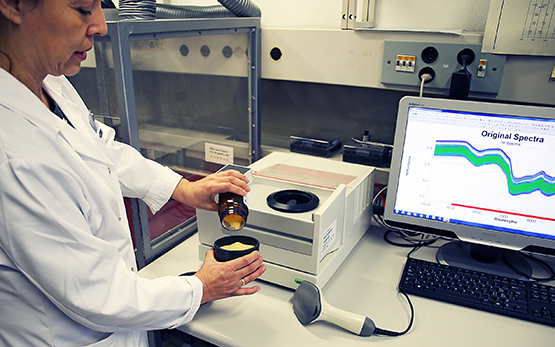Bee Diversity in Protected Areas

According to the Ordinance on Animal Breeding, the Dark Honeybee forms part of Switzerland’s animal genetic resources. Agroscope researchers have been studying its genetic diversity and potential hybridisation with other bee breeds. Gratifyingly, many highly diverse pure-bred colonies have been found in the four protected areas. The preservation of genetic diversity is especially important with regard to stress factors such as parasites, diseases, pesticides and future changes in the environment.
Horses Relieve Stress by cribbing

Agroscope researchers carried out a study with horses exhibiting stereotypic behaviour in the form of cribbing. Surprisingly, they discovered that although cribbing animals react more strongly to stress, they also seem better able to relieve this stress by cribbing. In a nutshell: it is counterproductive to prevent horses from cribbing. Instead, preventive measures promoting high-welfare housing and treatment and which improve the wellbeing of cribbing horses are what is needed.
Milk Replacer for Low Birth-Weight Piglets

Improved reproductive performance of sows has resulted in larger litter sizes. Larger litters, however, also mean greater numbers of low birth-weight piglets. As part of a European project, Agroscope investigated whether weaning these piglets early and feeding them with milk replacer enriched with specific amino acids improves their growth and survival rate. Results show a mortality rate of 0% and an improved growth performance trend over the first 28 days of life.
Experimental Housing

In June 2015, Agroscope’s new experimental housing for emissions research opened its gates to the public. The housing is designed to refine promising measures for reducing emissions, as well as to investigate the reduction potential and practicality of said measures, together with the industry, the Empa and the ETH. The experimental housing is a resting cubicle with exercise pen for dairy cattle. A special feature is the modular construction of the housing, with two identical housing compartments for every 20 cows.
New Analytics in Feed Inspection

Agroscope’s official Feed Inspectorate checks whether feed companies observe legal provisions, and whether the feed marketed in Switzerland conforms to these provisions. In 2015, the NIRS (near-infrared spectroscopy) methodology was introduced in order to obtain information on constituents quickly and cost-effectively. Based on light absorption, this method is increasingly used for food and feed quality inspections.





